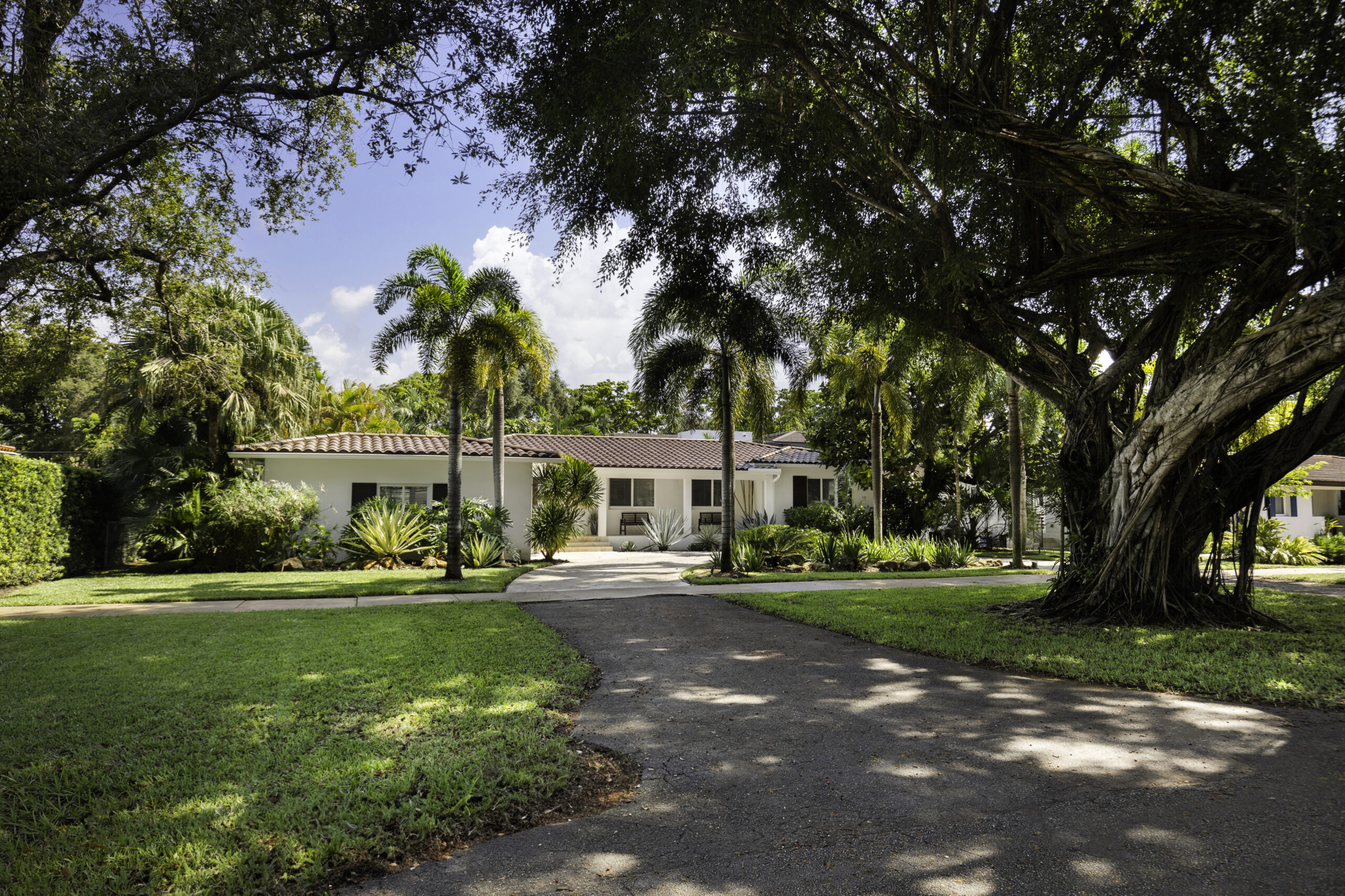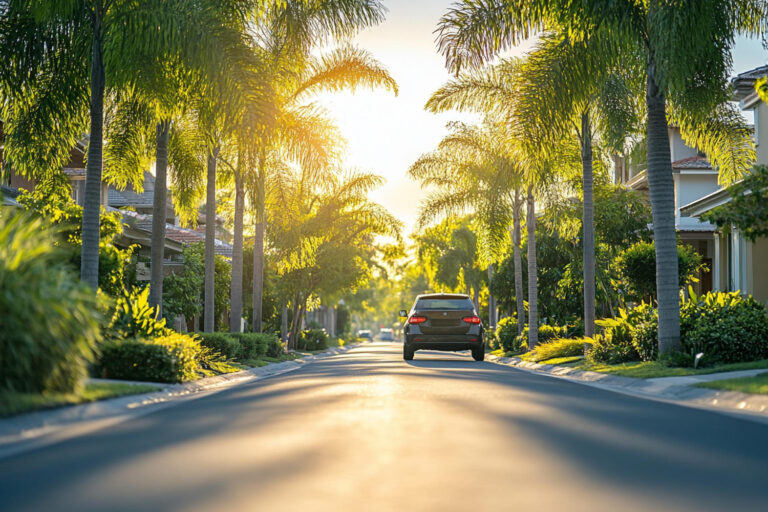Maximize Your Results Pressure Washing Concrete: Pre and Post-Treatment Techniques
When it comes to maintaining our homes, we all seek the best methods to ensure they look pristine. Pressure washing concrete is a powerful technique to remove grime, mold, and debris, instantly elevating the appearance of driveways, patios, and sidewalks. Its effectiveness, however, greatly depends on the pre and post-treatment processes, which optimize cleaning results and prolong the surface's durability. Whether tackling a small project in Pinecrest or managing more significant assignments in Coral Gable, Doral, Miami, or Miami Springs, understanding these techniques is crucial for every homeowner.
In this article, we'll delve into why pre-treating surfaces before pressure washing is essential, followed by a guide on effectively doing it. Next, we'll cover the steps necessary to pressure-wash concrete after pre-treatment to ensure the best outcome. We'll also discuss the importance of post-treating and how to execute it properly. Finally, we'll highlight these treatments' key benefits, helping you keep your home's exterior in top condition. By the end of this guide, you'll be equipped with valuable knowledge to unlock the full potential of pressure washing your concrete surfaces, ensuring they stand out in any neighborhood, from Pressure Washing Pinecrest to Miami Springs Pressure Washing.
Why Pre-Treating is Important Before Pressure Washing
Understanding the Importance of Pre-Treating
Pre-treating surfaces before pressure washing is crucial for several reasons. It enhances the cleaning process, making it more efficient and effective. Here's how:
- Loosening Dirt and Bacteria: A pre-treatment solution helps loosen all the dirt, grime, and bacteria on surfaces like driveways. This makes it easier for the pressure washer to remove these substances quickly.
- Protecting Surrounding Areas: Pre-wetting the surrounding grass and plants with water shields them from potentially harmful pre-treat chemicals.
- Safety Measures: Wearing protective gear like rubber gloves and safety goggles during the mixing and applying pre-treatment solutions ensures your safety from harsh chemicals.
- Effective Mixture Ratios: As recommended, creating a 3% bleach solution involves mixing specific amounts of liquid pool chlorine, water, and dish soap. This ratio ensures the solution is strong enough to be effective but not harmful to the concrete.
- Application Technique: Apply the pre-treatment evenly across the driveway and allow it to dwell for 5-10 minutes, giving it ample time to break down tough stains and buildup.
Benefits of Pre-Treating
Pre-treating prepares the surface for pressure washing and contributes to a more thorough cleaning. Here are the benefits:
- Time Efficiency: Pre-treatment reduces cleaning time by loosening dirt and stains beforehand, making them easier to wash away.
- Improved Results: Pre-treated Surfaces often have better cleaning outcomes, with fewer stubborn stains and residues left behind.
- Cost-Effectiveness: Pre-treating enhances the effectiveness of pressure washing and can save money on water and electricity by reducing the time and intensity needed for cleaning.
- Surface Protection: Properly diluted and applied pre-treatment solutions help avoid surface damage, which overly aggressive washing techniques can cause.
By incorporating these pre-treatment techniques, you ensure that your pressure washing cleans more effectively and preserves the quality and longevity of your concrete surfaces.
How to Pre-Treat Surfaces Effectively
Choosing the Right Chemicals
Before pressure washing concrete, selecting the appropriate chemicals for pre-treatment is essential. Alkaline cleaners are ideal for breaking down oily substances due to their high pH levels. These cleaners lift oil and grease stains, preparing the concrete for more effective cleaning. Alternatively, a standard solution involves a mixture of bleach, water, and soap. For a standard pre-treatment, mix 0.6 gallons of liquid pool chlorine with water in a 2-gallon sprayer, adding 2 ounces of Dawn dish soap. This mixture helps remove stains and kill bacteria on the concrete surface.
Application Techniques
Start by removing all debris from the driveway to prevent anything from being kicked up during cleaning, which could cause injury or damage. Wear rubber gloves and safety goggles for protection. Apply the pre-treatment solution, beginning at one end of your driveway and moving slowly to ensure even coverage. Let the solution dwell for 5-10 minutes to break down tough stains and buildup. If any solution accidentally reaches your grass, immediately soak the area with a garden hose to prevent damage.
Safety Precautions
Safety is paramount when handling chemical solid mixtures. Always wear protective gloves and goggles to shield yourself from harmful substances. Be mindful of the potential to burn plants or grass with strong chemical mixes. If using high concentrations, such as a 50/50 mix of sodium hypochlorite and water, start with lower strengths and adjust as necessary based on cleaning effectiveness and safety considerations. Please always be careful with the pressure washer, as it can eject water with enough force to cause serious injury.
Steps for Pressure Washing After Pre-Treatment
Equipment and Tools
Gather the right tools to ensure effective pressure washing after pre-treatment. You'll need a high-pressure washer, appropriate nozzles, and safety gear. Opt for a pressure washer that suits the surface you're cleaning—generally, a unit with 3000 to 3500 PSI is sufficient for most home projects. Include various nozzles: 0° for tough stains, 15° for general cleaning, and a softer spray tip for delicate areas.
Optimal Techniques
- Start at the Top: Begin at the highest point of the surface. This method ensures that dirty water flows down and away from the cleaned area.
- Proper Nozzle Distance: Maintain a distance of about 12 inches from the surface. Getting too close can damage the concrete.
- Even Sweeping Motions: Move the nozzle in steady, overlapping strokes to prevent streaking and ensure an even clean.
- Adjust Pressure Settings: To prevent damage to softer surfaces, use lower pressure settings. Increase pressure gradually if necessary.
- Rinse Thoroughly: After washing, switch to a high-pressure nozzle for rinsing. Ple all detergent and loosened debris are entirely washed off.
Common Mistakes to Avoid
- Excessive Pressure: Avoid too much pressure, which can etch or damage surfaces.
- Wrong Nozzle Choice: Using incorrect nozzles can lead to inadequate cleaning or surface damage. Choose the right one for the job.
- Overlooking Safety: Always wear protective gear, including goggles and gloves, and secure the area to prevent accidents.
- Skipping Test Area: Always test the washer on a small, inconspicuous area to ensure it does not damage the surface.
- Allowing Soap to Dry: Do not let the cleaning solutions dry on the surface. This can leave residues and streaks.
- Neglecting Equipment Maintenance: Regularly check and maintain your pressure washing equipment to avoid breakdowns and ensure efficient cleaning.
By following these steps and avoiding common pitfalls, you can effectively use a pressure washer to clean surfaces after pre-treatment, ensuring optimal results and prolonging the life of your outdoor areas.
Why Post-Treating is Crucial After Pressure Washing
Reducing Visible Striping
Post-treatment is vital in diminishing any visible striping left by surface cleaners. This step ensures your driveway appears uniformly clean without unsightly marks.
Enhancing Surface Longevity
Applying a post-treatment can significantly extend the cleanliness of your driveway. It kills any lingering bacteria and prevents the quick return of mold and algae.
Adjusting Treatment Strength
If residues persist post-cleaning, increasing the strength of your post-treatment is effective. A 50/50 mix of sodium hypochlorite and water may be necessary for tougher stains.
Cost-Effectiveness
Using a small amount of chemicals for post-treatment can be more economical than extensive pressure washing alone. It saves time and reduces the need for repeat cleaning sessions.
Achieving a Brighter Finish
When sodium hypochlorite dries on concrete, it leaves a whiter and brighter finish. This treatment not only cleans but also enhances the aesthetic appeal of your driveway.
Safety and Environmental Considerations
Always consider the potential for chemical runoff, which can harm vegetation. It's crucial to manage the strength of your mix to avoid damaging nearby plants and grass.
Following these guidelines, post-treating your concrete surfaces after pressure washing ensures better cleaning results, prolongs surface cleanliness, and maintains the aesthetic quality of your outdoor spaces.
How to Post-Treat Surfaces Correctly
Recommended Solutions
Applying the right post-treatment solutions after pressure washing is crucial. A typical effective mixture includes Sodium Hypochlorite (SH) diluted with water. For typical cleaning, a 50/50 mix of SH and water is recommended. This helps effectively remove any lingering algae or mold. A milder solution suffices for surfaces less soiled, reducing the risk of damage to the concrete or adjacent vegetation.
Application Methods
When applying post-treatment solutions, ensure the surface is free from standing water. Use a pump sprayer for even application, maintaining a safe distance of about 12 inches from the surface to prevent splash-back. It's essential to cover all areas uniformly, especially those that appear darker or stained. After application, do not rinse immediately; allow the solution to sit and work on the surface. This usually takes about 10-15 minutes, depending on the strength of the solution.
Ensuring Long-Lasting Cleanliness
To ensure the effects of post-treatment last, it's essential to let the surface dry completely, which might take 24 to 48 hours based on local humidity and weather conditions. Once dry, please look at the surface for left spots or residual stains. Regular maintenance, including routine inspections and touch-up treatments, will keep the surface clean longer and prevent future buildup. Always remember to address any minor damages like cracks or chips early to maintain the integrity of the surface.
Critical Benefits of Pre and Post-Treating
Enhanced Cleaning Efficiency
We understand the importance of effective cleaning. Pre-treating surfaces before pressure washing helps loosen dirt and bacteria, making it easier to remove debris when we start pressure washing. By applying a pre-treatment and allowing it to dwell, we ensure that dirt comes up quicker and easier. This saves time and reduces the effort during the cleaning process.
Protection of Surfaces
Regular maintenance, including pre-and post-treatments, protects your concrete surfaces. By using the right chemicals and techniques, we prevent damage and extend the life of the surfaces. Pre-treatments help avoid harsh cleaning methods that can erode or damage the concrete. Post-treatments, on the other hand, help seal the surface, protecting it from future stains and deterioration.
Long-Term Maintenance
The longevity of your concrete surfaces significantly depends on how well they are maintained. Post-treating the surfaces ensures that they remain clean for longer, reducing the frequency of high-intensity cleanings. This helps support the aesthetic appeal and proves cost-effective in the long run. Regular post-treatments prevent the quick return of mold and algae, keeping your driveways and patios looking new for years to come.
Conclusion
Through exploring the significance of pre and post-treatment techniques inpressure washing concrete surfaces, this article offers a comprehensive guide for homeowners seeking to maintain and enhance their property’s appearance. The detailed examination of pre-treating, washing, and post-treating demonstrates the importance of each step and underscores the essential nature of the correct approach to ensure the longevity and aesthetics of concrete surfaces. By adopting these methods, homeowners can significantly uplift their residence's curb appeal.
In addition to understanding these critical techniques, partnering with experts who can deliver unmatched results is pivotal. Consider contacting the professionals for specialized assistance and to achieve the best possible outcome for your concrete surfaces. Call Softwash Your Roof at (786)876-3505 or email John@softwashyourroof.comjohn@softwashyourroof.com, ensuring your home’s exterior remains pristine for years. With the right approach and expert help, maintaining beautiful concrete surfaces becomes more straightforward and effective.
FAQs
1. What should be applied to concrete before pressure washing?
Before pressure washing concrete, treating the surface with specific cleaners is advisable to enhance the cleaning process. Options include:
- Acidic Cleaners: These potent solutions effectively remove stains, dirt, and contaminants that respond well to acidic solutions.
- Alkaline Cleaners: Useful for tackling grease and oil-based stains.
- pH-Neutral Cleaners: Ideal for general cleaning without altering the concrete's chemical balance.
- Bacterial Cleaners: These target organic matter, breaking it down biologically.
2. How should concrete be treated after pressure washing?
After pressure washing, concrete should undergo a post-treatment process involving applying a chemical solution to the surface. In regions like Texas, a standard solution is a mixture of 2-4% sodium hypochlorite in water. This treatment helps to clean the surface furth and inhibit the growth of mold and mildew.
3. What is the correct technique for pressure washing concrete?
To effectively pressure wash concrete, begin at the higher end of the area and progress downwards, following the natural water flow. Use the spray wand directed at the surface, triggering the spray and sweeping the nozzle back and forth across the concrete. Ensure each stroke overlaps slightly to avoid missing any spots.
4. Which chemical is recommended for a pressure washer on concrete?
Citric acid is highly recommended when using a pressure washer on concrete because it can break down rust and stains. This natural acid is particularly effective on concrete driveways, wood decks, and fences, making it a versatile cleaning agent.








